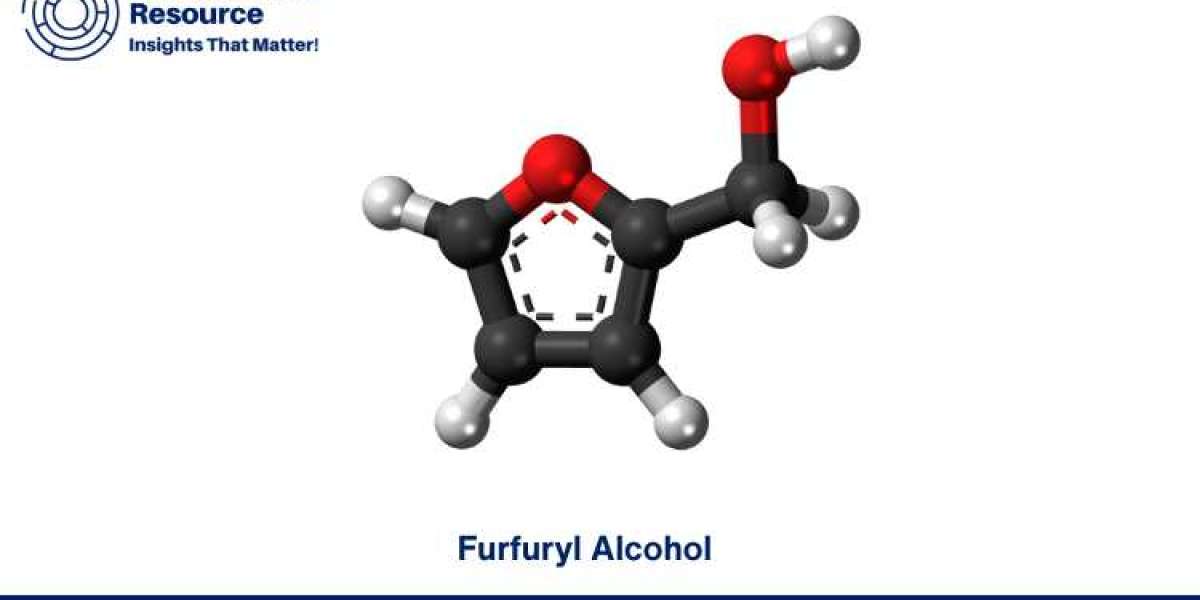Furfuryl alcohol, a versatile organic compound derived from agricultural by-products, has garnered significant attention in various industrial applications. As an essential intermediate in the production of furan resins, furfuryl alcohol is primarily used in the manufacture of foundry sand binders, corrosion-resistant resins, and thermoset polymer matrices. The growing demand for sustainable and eco-friendly materials has propelled the importance of furfuryl alcohol in the global market. This blog aims to provide a comprehensive overview of the furfuryl alcohol production process, including manufacturing methods, raw material costs, and recent developments in the industry.
Manufacturing Report and Process
The production of furfuryl alcohol typically involves the catalytic hydrogenation of furfural, which is derived from lignocellulosic biomass such as corn cobs, oat hulls, and sugarcane bagasse. The process can be broken down into several key steps:
1. Raw Material Preparation
The production process begins with the collection and preparation of raw materials. Agricultural residues rich in pentosans, such as corn cobs and sugarcane bagasse, are pretreated to extract hemicellulose. This involves mechanical grinding followed by hydrolysis to break down the hemicellulose into fermentable sugars.
2. Furfural Production
The extracted hemicellulose undergoes an acid-catalyzed dehydration process to produce furfural. The typical reaction conditions involve the use of a strong acid catalyst, such as sulfuric acid, at elevated temperatures. The furfural vapors are then condensed and collected in a distillation unit.
Request For Sample: https://www.procurementresource.com/production-cost-report-store/furfuryl-alcohol/request-sample
3. Hydrogenation of Furfural
The hydrogenation of furfural to furfuryl alcohol is a critical step in the production process. This reaction is carried out in the presence of a metal catalyst, commonly copper chromite or nickel, under high-pressure hydrogen gas. The reaction conditions are optimized to achieve maximum conversion rates while minimizing the formation of by-products.
4. Purification and Distillation
The crude furfuryl alcohol obtained from the hydrogenation reactor contains impurities that must be removed to achieve the desired product purity. This is typically done through a series of distillation steps, where the furfuryl alcohol is separated from unreacted furfural, water, and other by-products. The purified furfuryl alcohol is then collected and stored for further use or sale.
5. Quality Control and Packaging
The final step in the production process involves rigorous quality control to ensure that the furfuryl alcohol meets industry standards and specifications. Various analytical techniques, such as gas chromatography and high-performance liquid chromatography, are used to assess the purity and concentration of the product. Once the product passes quality checks, it is packaged and prepared for distribution.
Raw Material Costs
The cost of raw materials plays a significant role in the overall economics of furfuryl alcohol production. The primary raw materials include lignocellulosic biomass and hydrogen gas. Here is a breakdown of the key cost components:
1. Lignocellulosic Biomass
The cost of lignocellulosic biomass, such as corn cobs, oat hulls, and sugarcane bagasse, can vary depending on the region and availability. These agricultural by-products are generally considered low-cost feedstocks, but transportation and handling costs can impact the overall expense. The cost-effectiveness of using these materials is one of the key drivers behind the adoption of furfuryl alcohol production.
2. Acid Catalysts
Sulfuric acid is commonly used as a catalyst in the furfural production process. The cost of sulfuric acid is relatively low, but it is essential to consider the cost of handling and disposing of spent acid, which can contribute to the overall production cost.
3. Hydrogen Gas
Hydrogen gas is a critical input in the hydrogenation process. The cost of hydrogen can fluctuate based on factors such as production methods (e.g., steam methane reforming, electrolysis) and market demand. The availability of affordable hydrogen sources is crucial for maintaining the economic viability of furfuryl alcohol production.
4. Metal Catalysts
Copper chromite and nickel catalysts are widely used in the hydrogenation of furfural to furfuryl alcohol. The cost of these catalysts can be significant, and their lifespan and reusability are important considerations in the production process. Efficient catalyst recovery and recycling methods can help reduce the overall catalyst cost.
Latest News
The furfuryl alcohol industry is witnessing several noteworthy developments, driven by advancements in technology, sustainability initiatives, and market dynamics. Here are some of the latest news highlights:
1. Technological Innovations
Recent research and development efforts have focused on improving the efficiency and sustainability of the furfuryl alcohol production process. Innovations in catalyst design, process optimization, and feedstock utilization are being explored to enhance yield and reduce environmental impact. For instance, researchers are investigating the use of bio-based catalysts and green hydrogen sources to minimize the carbon footprint of the production process.
2. Market Expansion
The growing demand for eco-friendly and sustainable materials is driving the expansion of the furfuryl alcohol market. Industries such as construction, automotive, and electronics are increasingly adopting furfuryl alcohol-based resins and polymers for their superior performance and environmental benefits. This trend is expected to boost the demand for furfuryl alcohol in the coming years.
3. Strategic Collaborations
Several key players in the furfuryl alcohol industry are forming strategic partnerships and collaborations to strengthen their market position and enhance their product offerings. These collaborations aim to leverage synergies in research, production, and distribution to meet the evolving needs of customers and markets.
4. Regulatory Developments
Regulatory frameworks and sustainability standards are influencing the furfuryl alcohol industry. Governments and regulatory bodies are promoting the use of bio-based chemicals and materials to reduce reliance on fossil fuels and mitigate environmental impact. Compliance with these regulations is becoming a critical factor for manufacturers in the furfuryl alcohol market.
5. Environmental Impact
The environmental impact of furfuryl alcohol production is a significant area of focus. Efforts are being made to develop greener production processes, reduce waste generation, and improve resource efficiency. Companies are investing in sustainable practices and technologies to align with global environmental goals and enhance their corporate social responsibility.
Conclusion
The production of furfuryl alcohol is a multifaceted process that involves the transformation of agricultural by-products into a valuable industrial chemical. By understanding the intricacies of the manufacturing process, raw material costs, and latest industry developments, stakeholders can make informed decisions to optimize production, reduce costs, and capitalize on emerging opportunities. As the demand for sustainable materials continues to rise, furfuryl alcohol is poised to play a crucial role in the future of various industrial applications.







